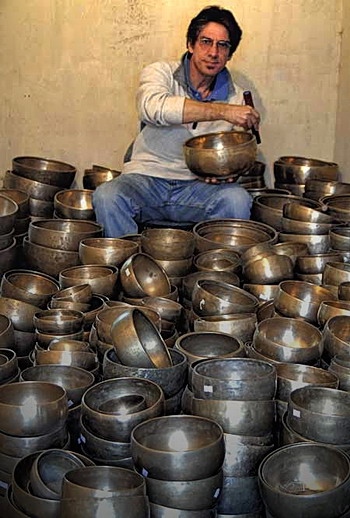Musik,-Takt & Tonlehre
Swami Haridas Music Festival in Vrindavan
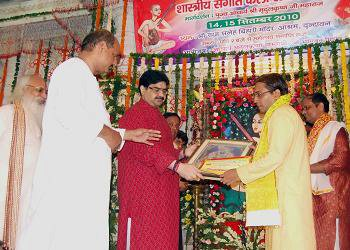
Braj Vrindavan Heritage Alliance
http://bvhalliance.blogspot.com
www.sudhir pandey.tabla masters.htm
Swami Haridas was a spiritual poet and classical musician. Credited with a large body of devotional compositions, especially in the Dhrupad style, he is also the founder of the Haridasi school of mysticism, still found today in North India. His work influenced both the classical music and the Bhakti movements of North India, especially those devoted to Krishna’s consort Radha. He is accounted a follower of the Nimbarka Sampradaya, the major Vaisnava tradition of exclusive devotion to Radha-Krishna. He was the disciple of Purandara Dasa and the teacher of Tansen. Read More: > HERE <
Vrindavan (Hindi: वृन्दावन)( pronunciation (help·info)) (alternately spelled Vrindaban, Brindavan, Brindavana, or Brundavan) also known as Vraj (as it lies in the Braj region) is a town in the Mathura district of Uttar Pradesh, India. It is the site of an ancient forest which is the region where Lord Krishna spent his childhood days. The town is about 15 km away from Mathura, the city of Lord Krishna’s birthplace, near the Agra-Delhi highway. The town hosts hundreds of temples dedicated to the worship of Radha and Krishna and is considered sacred by a number of religious traditions such as Gaudiya Vaishnavism, Vaishnavism, and Hinduism in general. It is nicknamed „City of Widows“ after the large population of abandoned widows who seek refuge here. Read More: > HERE <
Swami Haridas was a multi faceted personality. Primarily we know him as the saint who realized God through the route of nad brahma sadhna i.e. praying continuously in music. He not only composed a large number of poems (pad) but also started and perfected newer raags in classical music to sing the same. He realized God in the form of Shri Bankey Bihari, started the tradition of and initiated his disciples into rasopasna bhakti. He is also known as Adya Acharya of Raas Leela tradition. His birthday, which falls on Radha Ashtami day, is celebrated as a very special day in the temple, in Nidhivan and in Vrindavan.
Nidhivan as well as temple, both are decorated tastefully with flowers, flags and hangings. We have regular darshan at both places in the morning. In afternoon, around 4:30 PM, Raas Leela is staged in the courtyard of the temple. It is worthwhile to note, it is only once in the whole year on this day, that Raas Leela is performed in the temple.
Swami Haridas Sangit Samaroh Festival – Eminent Musician His Holiness Swami D. R. Parvatikar Veena Maharaj wanted to establish a yearly music Festival a international level at Vrindaban India in glorious memory of great musician Saint Shri Swami Haridas (Guru of Tansen ). Several music devotees and Artist appreciated this thinking of Veena Maharaj and Shri Swami Haridas Seva Samiti established by him in 1964 and every year Swami Haridas Sangit Samaroh started on Bihar Panchami, the appearance day of Shri Thakur Bankey Behariji.
After some period Shri Gopal Goswami taken up to organize the festival in Vrindaban, Delhi and Mumbai on the occasion of Radha-Astthami and managed many years. Gopal Goswami also organized the festival for few years. Prior to that Saint Shri Paad Baba of Vrindaban organized this music festival. This of Radha-Asthmi Atul Krshna Goswami organized it three days in Saneh Bihari Temple in Vrindaban.
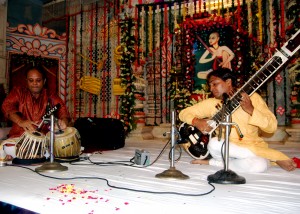
Swami Haridas Sangit Samaroh in the stage of famous Senior Artists of music field. Pt. Ravi Shankar, Ali Akbar, Bhim Sen Joshi, Bismillah Khan, Vilayat Khan, Gopikrishna, Sitara Devi, Kishori Amonkar, Ramchaturmalik and all of maximum famous artists have already been participated ith devotion to Swami Haridas ji. In view of the chain, this year also famous artists been invited.
Maestro Dr. Acharya Trigunateet Jaimini presented excellent performance on Sitar with beautiful accompany of Tabla player Sudhir Pandey from Delhi India who has quality experience of accompany with great masters Nikhil Banerji, Jasraj, Vilayat Khan & other Indian classical masters. Dr. Jaimini (Disciple of Swami D. R. Parvatikar) always get remarkable appreciations from the intellectual audience. His artistic talency holding over since two decades.
Dr. Jaimini & Sudhir Pandey also awarded Shastriya Kala Ratna Award in Swami Haridas Sangit Samaroh Festival. Coordinator Anup Sharma & Devendra Sharma told that He Specially invited Sudhir Pandey Tabla Player from Delhi to accompany with Dr. Jaimini for best presentation to the audience was thankful to Acharya Jaimini for his valuable participation in the programme.
Article by Ratnambara Sharma
writer Art & Culture
email – artcolour@rediffmail.com
mob. 91 9410226334
- Meet UNESCO World Heritage, friends, fans at fb <
- Meet Support UN Resolution on the Right to Water <
- Meet International Year of Biodiversity, friends, herbal fans at fb <
- Meet International Rivers, friends fans at fb <
- Meet IAIA – International Association for Impact Assessment at fb <
- Even like Yamuna the largest water distribution of Ganga, also Xingu River for Amazonas the consequences about non enviromental assessment creating negativ enviromental impacts, loss of biodiversity and cultural heritage. Scientists round the globe sounding Alarm about the freshwater qualities and Rivers.
Hindol Deb – Swar Ganga Music Foundation
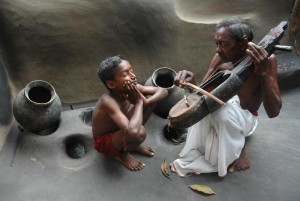
http://www.myspace.com/hindoldeb
The origins of Indian classical music can be found in the oldest of scriptures, part of the Hindu tradition, the Vedas. It has also been significantly influenced by Indian folk music, and Hindustani music has been influenced by Persian music. The Samaveda, one of the four Vedas, describes music at length. The Samaveda was created out of Rigveda so that its hymns could be sung as Samagana; this style evolved into jatis and eventually into ragas. Indian classical music has its origins as a meditation tool for attaining self realization. Bharat’s Natyashastra was the first treatise laying down fundamental principles of dance, music and drama. Read More: > HERE <
One of the upcoming sitar player and composer of his generation, Hindol started learning the Sitar at the age of five from his father, Sri. Panchanan Sardar. Later, he was groomed under the guidance of Pt. Deepak Choudhury, a senior disciple of Pt. Ravi Shankar. He graduated from the Prayag Sangeet Samiti under Allahabad University with a gold medal and is a recipient of the Sahitya Kala Parishad scholarship and the National Scholarship for Hindustani Classical Music in Sitar.
Hindol has been pursuing his dream intensely and is on his way to establish himself as a talented, upcoming young musician, giving several performances at many festivals in India and abroad. He has composed and played his music for various plays and ballets.
One striking quality about Hindol is the sense of maturity in his performance, which is unique at his age. With the deep resonating tone of his instrument, each note makes its presence felt and nothing fades away in ambiguity. His aesthetical understanding is rooted deep in spirituality. Simultaneously, he has also accomplished himself as a composer, exploring the infinite combinations in the crossover of Indian music with various other genres like Western Classical, Jazz, Blues, Electronica, Flamenco and folk music.
Recently, he was invited by the French government, with a residency scholarship, to work with other musicians and experiment with different genres like Jazz, Blues and electronic music, along with Indian classical music and performances. He was also invited by the Swedish government as the representative of India, with the musicians from fourteen different countries, to teach and play each other’s music and to perform at the ETHNO festival in Sweden. He has also toured Belgium and Greece to take part in many concert festivals.
Apart from being a performer, he is also a dedicated teacher and conducts workshops of Hindustani music, improvisation techniques and Indian Classical music appreciation in India and abroad.
Shri. Hindol Deb Plays Raag Hemant on the Day 1 of SwarGanga Music Festival 2008. The festival spanned for two days 20th and 21st December 2008. For more information visit www.swarganga.org.
SwarGanga Music Foundation, Atlanta, GA and SwarGanga Trust, Thane, India are non-profit organizations started by Adwait Joshi to promote young and upcoming artists in the field of North Indian Classical Music and spread the knowledge of North Indian Classical Music to people all over the world. SwarGanga currently has over 2 million hits from 147 different countries every year. Thanks to you all for making this site so popular.here.events page or to see any classical music events upcoming in your area please visit the event calendar.
To learn about different concepts of classical music such as sur, patti, taal, raags, please go through the series of articles starting . For a list of events organized by SwarGanga please visit www.swarganga.org . Your feedback helps us improve the website. So please respond by sending us an email .
The Energy [R]evolution demonstrates how the world can get from where we are now, to where we need to be in terms of phasing out fossil fuels, cutting CO2 while ensuring energy security. This includes illustrating how the world’s carbon emissions from the energy and transport sectors alone can peak by 2015 and be cut by over 80 percent by 2050. This phase-out of fossil fuels offers substantial other benefits such as independence from world market fossil fuel prices as well as the creation of millions of new green jobs. http://www.greenpeace.org/energyrevolution
UYGHUR – Trad. Medicine, Arts & Culture
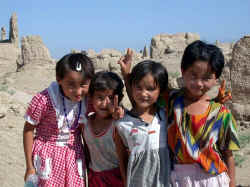
www.unpo.org/Uyghuren Nederland (VUN)
http://turkmenfriendship.blogspot.com
The Uyghur (Uyghur: ئۇيغۇر, Uyghur?; simplified Chinese: 维吾尔; traditional Chinese: 維吾爾; pinyin: Wéiwú’Ä�r; are a Turkic ethnic group living in Eastern and Central Asia. Today Uyghurs live primarily in the Xinjiang Uyghur Autonomous Region in the People’s Republic of China. An estimated 80 % of Xinjiang’s Uyghurs live in the southwestern portion of the region, the Tarim Basin. Large diasporic communities of Uyghurs exist in the Central Asian countries of Kazakhstan, Kyrgyzstan, and Uzbekistan. Smaller communities are found in Mongolia, Pakistan, Afghanistan, Turkey, Russia and Taoyuan County of Hunan province in south-central Mainland China. Uyghur neighborhoods can be found in major cities like Beijing, Shanghai, Sydney, Washington D.C, Munich, Tokyo, Toronto, Istanbul. Read More: > HERE <
Erkin Alptekin (born on July 4, 1939 in East Turkistan) is a noted international advocate for the rights of native and indigenous people. Among the organizations he has led are the Unrepresented Nations and Peoples Organization, of which he was formerly the chairman, and the World Uyghur Congress, of which he was the first president. Read More: > HERE <
Erkin Alptekin is one of the foremost human rights advocates for the Uighur people of Eastern Turkestan, also known as the Xinjiang Autonomous Region of the People’s Republic of China. Mr. Alptekin was employed by Radio Free Europe/Radio Liberty from 1971 to 1994. He is one of the founders of the Unrepresented Nations and People’s Organization (UNPO), and currently serves as its General Secretary. www.dalailamafoundation.org
Uyghur Medicine – The Uyghurs had an extensive knowledge of medicine and medical practice. Sung (Song) Dynasty (906-960) sources indicate that an Uyghur physician, Nanto, traveled to China, and brought with him many kinds of medicine not known to the Chinese.
There are 103 different herbs for use in Uyghur medicine recorded in a medical compendium completed by Li Shizen (1518-1593), a chinese medical authority. The Tartar scholar Rashit Rahmeti Arat has written two valuable books in German entitled Zur Heilkunde der Uighuren (Medical Practices of the Uygurs) , in 1930 and 1932, relying on Uyghur documents discovered in East Turkestan. In his book, Arat gives important information on Uyghur medicine and medical treatment.
Among other documents he studied he found a very important sketch of a man with an explanation of acupuncture. Relying on this document, some western scholars claim that acupuncture was not a Chinese, but a Central Asian invention and the Uyghurs perfected the method. Traditional Uyghur medicine, which can be traced back for more than 2,700 years through written records, is still very popular in East Turkestan today.
Tibetan Buddhist Medicine/Ancient Uyghur Civilization
Medicine – Tatar scholar, professor Reşit Rahmeti Arat in Zur Heilkunde der Uighuren (Medical Practices of the Uyghurs) published in 1930 and 1932, in Berlin, discussed Uyghur medicine. Relying on a sketch of a man with an explanation of acupuncture, he and some Western scholars suspect that acupuncture was not a Chinese, but an Uyghur discovery. Today, traditional Uyghur medicine can still be found at street stands. Similar to other traditional medicine, diagnosis is usually made through checking the pulse, symptoms, and disease history, and then the pharmacist pounds up different dried herbs, making personalized medicines according to the prescription. Modern Uyghur medical hospitals adopted the Western medical science and medicine and adopted Western pharmaceutical technology to discover new and produce traditional medicines.
- www.unpo.org , UNESCO – World Heritage
- Articles on Traditional Chinese Medicine <
- Articles on Traditional Tibetan Medicine <
- Gesellschaft für bedrohte Völker (GfbV), friends at fb <
- Meet STOP China’s GENOCIDE on the Uighur people, friends at fb <
- Meet EAST TURKESTAN UYGHURESTAN, friends, fans at fb <
- Meet Human Rights Watch, friends, fans at fb <
- Council for a Parliament of the World’s Religions (CPWR) at fb <
- The International Ecotourism Society (TIES)at fb <
SRI VIDYA, Vidyas in Hinduism & Yoga Upanishads
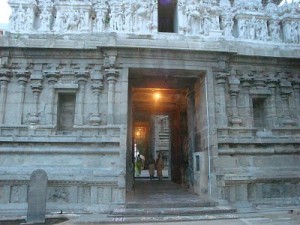
108 Upanishads | Vedanta Spiritual Library
Mess.166: A Holy Trip to Arunachaleshwara
http://taonews123.blogspot.com
ŚrÄ� VidyÄ� (also spelled „Shri Vidya“) is the name of a Hindu religious system devoted to the goddess LalitÄ� TripurasundarÄ� or simply TripurasundarÄ� (‚Beautiful Goddess of the Three Cities‘). According to British scholar Gavin Flood she is a tantric form of the goddess ŚrÄ� (also called LakṣmÄ�), consort of Vishnu. However, the late orthodox leader of the largest Samaya school of ŚrÄ� VidyÄ�, Sri Chandrasekharendra Saraswati Swamigal, says that the ŚrÄ� in ŚrÄ� VidyÄ� is a title of respect meaning The VidyÄ� and has no connotation to LakṣmÄ�. And Indian scholar V.R. Ramachandra Dikshitar states she is a form of Durga or Paravati, consort of Shiva , as well as several names from the LalitÄ� SahasranÄ�ma which call her the beloved of Shiva. The Sanskrit word vidyÄ� means „knowledge“ or „lore.“ A thousand names for this form of DevÄ� are recited in the LalitÄ� SahasranÄ�ma, which includes ŚrÄ� VidyÄ� concepts. Read More: > HERE <
The Sri Yantra (shown here in the three-dimensional projection known as Sri Meru Chakra or Maha Meru used mainly in rituals of the Srividya Shakta sects) is central to most Tantric forms of Shaktism.
Meru Chakras are frequently a central focus and ritual object for this worship of the Goddess. They are a more potent form of the Sri Yantra, since they are three-dimensional. Meru Chakras can be found in rock crystal and in metal, often a traditional panchaloha formula of silver, antimony, copper, zinc, and pewter, which enhances the flow and generation of Sri’s beneficial energies, covered in gold.
In the theology of the ŚrÄ� VidyÄ� the goddess is supreme, transcending the cosmos which is a manifestation of her. The school has an extensive literature of its own. The details of the beliefs vary in different texts, but the general principles are similar to those found in Kashmir Shaivism.
The goddess is worshipped in the form of a mystical diagram (Sanskrit: yantra) of nine intersecting triangles, called the śrÄ�cakra („Chakra of ŚrÄ�“) that is the central icon of the tradition.
SRI CHAKRA by S. SHANKARANARAYANAN – SRI CHAKRA, the king of chakras is a master plan of manifestation drawn by the divine Draughtsman on the board of the infinite, a transcript of the Transcendent, a symbol-image of the supernal verities. The spiritual and occult tradition of the worship of the Mother Goddess and the Sadhana of Srividhya are explained in sixteen chapters in terms of modern thought and understanding. Based on authentic and authoritative Tantric texts the exposition in English is inspiring and original, almost a classic in the field of esoteric literature.
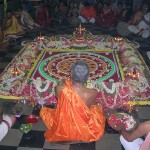
About the Author: Though his academic attainments are in Mathematics and his professional interests lie in a specialised field of industrial management, Sri S. Shankaranarayan has retained his first love for Sanskrit. In his childhood he was introduced to the ancient Sanskrit lore by his grandfather, Sri S. Narayana Iyer, who was himself a deep initiate in Sri Vidya, Later he came under the dynamic influence of Sri Kapali Sastriar. Shankaranarayanan cherishes a special regard for this tradition of the worship of the Divine Mother and his treatises on Devi Mahatmyam-both in Tamil and English have acquired an authenticity of their own. The present work on Sri Cakra, revealing as it does the depth of his scholarship, practical insight and occult knowledge, promises to be a classic on the subject. Endowed with luminous intellect, well-versed in the modes of esoteric worship and awake with an active spiritual aspiration, Shankaranarayanan is marked out to play a singular role in the resuscitation of the spiritual and occult tradition of India in terms of modern thought and understanding. -M. P. PANDIT
Buy the Book here: > www.exoticindiaart.com
- http://www.sriyantraresearch.com
- Ramana Maharshi – Sri Chakra Puja, every Friday <
- Meet International Vedanta Society, studies, friends at fb <
- Meet Kashmir Shaivism, friends and studies, at fb <
- Meet Shaktism „Doctrine of the Goddess“ at fb <
- Meet Hinduism, friends, fans, studies at fb <
- Meet Jivan Mukta, friends, studies at fb < (> Jivan Mukta <)
- Meet Prem Nirmal Holistic Counseling, studies, friends at fb <
- http://en.wikipedia.org/wiki/Flower_of_Life
UNESCO – The Tradition of Vedic Chanting
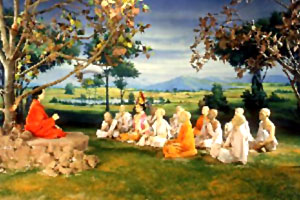
Shiksha is one of the six Vedangas
> UNESCO PUBLISHING, PURANAS & YOGA <
A shakha (Sanskrit śÄ�khÄ�, „branch“ or „limb“), is a Hindu theological school that specializes in learning certain Vedic texts, or else the traditional texts followed by such a school. An individual follower of a particular school or recension is called a śÄ�khin.- the term is also used in Hindu philosophy to refer to an adherent of a particular orthodox system.
A related term caraṇa, („conduct of life“ or „behavior“) is also used to refer to such a Vedic school : „although the words caraṇa and śÄ�khÄ� are sometimes used synonymously, yet caraṇa properly applies to the sect or collection of persons united in one school, and śÄ�khÄ� to the traditional text followed, as in the phrase śÄ�khÄ�m adhite, („he recites a particular version of the Veda“)“. The schools have different points of view, described as „difference of (Vedic) school“ (śÄ�khÄ�bhedaḥ). Each school would learn a specific Vedic Saṃhita (one of the „four Vedas“ properly so-called), as well as its associated Brahmana, Aranyakas, Shrautasutras, Grhyasutras and Upanishads. Read More: > HERE <
The Vedas comprise a vast corpus of Sanskrit poetry, philosophical dialogue, myth, and ritual incantations developed and composed by Aryans over 3,500 years ago. Regarded by Hindus as the primary source of knowledge and the sacred foundation of their religion, the Vedas embody one of the worlds oldest surviving cultural traditions.
The Vedic heritage embraces a multitude of texts and interpretations collected in four Vedas, commonly referred to as books of knowledge even though they have been transmitted orally. The Rig Veda is an anthology of sacred hymns; the Sama Veda features musical arrangements of hymns from the Rig Veda and other sources; the Yajur Veda abounds in prayers and sacrificial formulae used by priests; and the Atharna Veda includes incantations and spells. The Vedas also offer insight into the history of Hinduism and the early development of several artistic, scientific and philosophical concepts, such as the concept of zero.
Expressed in the Vedic language, which is derived from classical Sanskrit, the verses of the Vedas were traditionally chanted during sacred rituals and recited daily in Vedic communities. The value of this tradition lies not only in the rich content of its oral literature but also in the ingenious techniques employed by the Brahmin priests in preserving the texts intact over thousands of years. To ensure that the sound of each word remains unaltered, practitioners are taught from childhood complex recitation techniques that are based on tonal accents, a unique manner of pronouncing each letter and specific speech combinations.
Although the Vedas continue to play an important role in contemporary Indian life, only thirteen of the over one thousand Vedic recitation branches have survived. Moreover, four noted schools in Maharashtra (central India), Kerala and Karnataka (southern India) and Orissa (eastern India) are considered under imminent threat.
The Vedic literature that has come down to our times is attached to various traditional schools of recitation and ritual called the ‘shakhas’. All the four Vedas have more than one shakha extant. In the past, the number of shakhas studied was many times more.
According to the Mahabhasya of Patanjali, there were 21 shakhas of Rigveda, 9 of Atharvaveda, 101 of Yajurveda (86 of Krishna Yajurveda and 15 of Shukla Yajurveda, according to later authorities) and a 1000 varieties of chanting of Samaveda. Maybe, the number 1000 for the Samaveda merely refers to ‘numerous’. Nevertheless, although only 20 or so Shakhas of the Vedas are extant now, we do possess names of most of the lost Shakhas of the Rigveda, Yajurveda and Atharvaveda. Fragments of many of the lost shakhas are also available as quotations in ancient works. For the Samaveda, we do not have more than 40 names extant.
Two different Vedic shakhas might share one or more texts amongst themselves. Conversely, the distinction between two shakhas of the same Veda might result from the use of a different Samhita text, and/or a different Brahmana text, and/or different Kalpasutra text and so on. For e.g., the Baudhayana and the Apastamba shakhas use the same Taittiriya Brahmana, Taittiriya Samhita and Taittiriya Aranyaka but follow different Kalpasutras. On the other hand, the Shankhayana and the Kaushitaka shakhas use the same Samhita and Shrauta Sutra but their brahmanas have slightly different readings and their Grhyasutras are quite different.
A group or a community of people who study a particular shakha in its entirety (Samhita + Brahmana + Aranyaka + Kalpasutra + any additional texts) and perform its ritual constitute a ‘charana’. For instance, Brahmins who study the Taittiriya Samhita/Brahmana/Aranyaka together with the Kalpasutra of Apastamba say – “I follow the Apastamba charana’.
In certain cases, we have instances of ‘mixed shakhas’. For instance, the followers of Shakala shakha have adopted the Kalpasutra of Ashvalayana. The Ashvalayana shakha, which had the now well-known Ashvalayana Sutra, has in turn lost oral traditions of its Samhita. Likewise, the Kaushitakins of Kerala often use the Samhita of Shakalas.
The various shakhas of the Vedas were, at one time, spread throughout South Asia. Their geographical location has not been constant down the ages, as communities of Brahmins professing a particular shakha migrated from one part of India to the other, or adopted another shakha when it became impossible for them to sustain the tradition of their own shakhas.
It is quite certain however, that the tradition of recitation of the Vedic texts originated in north India, and this region was the area where almost all the shakhas originally arose. From various sources, we can determine the following geographical distribution of Vedic Shakhas at various intervals of times, and their present state of survival:
The History of (Tibetan) Singing Bowls
> TIBETAN SINGING BOWL HISTORY <
Singing bowls (also known as Himalayan bowls, rin, medicine bowls, Tibetan bowls or suzu gongs in Japan) are a type of bell, specifically classified as a standing bell. Rather than hanging inverted or attached to a handle, standing bells sit with the bottom surface resting. The sides and rim of singing bowls vibrate to produce sound. Singing bowls were traditionally used throughout Asia as part of Bön and Tantric Buddhist sadhana.
Today they are employed worldwide both within and without these spiritual traditions, for meditation, trance-induction, relaxation, healthcare, personal well-being and religious practice. Read More: > HERE <
Bei einer Klangmassage, auch Klangschalenmassage, werden Klangschalen auf den bekleideten Körper aufgesetzt und angeschlagen bzw. angerieben oder direkt über den Körper gehalten, ohne ihn zu berühren. Auf diese Weise überträgt sich der Schall des erzeugten Tons auf den Körper. Dies wird als Vibration im Körper wahrgenommen. Die Klangmassage soll im Wellness-Bereich entspannend und beruhigend wirken und wird zum Beispiel bei Stress empfohlen. Im Esoterik-Bereich werden Klangtherapien angeboten, bei denen die Klangschalen in Zusammenhang mit den Chakras gebracht werden.
Die Wirkung der Klangmassage wird zum einen damit erklärt, dass der menschliche Körper überwiegend aus Wasser besteht, das durch die Schallwellen in Bewegung versetzt wird. Dieser Effekt wirke letztlich wie eine innerliche Massage der Körperzellen. Körperliche und auch seelische Verspannungen und Blockaden sollen so gelöst werden.
Wissenschaftliche Belege für diese Theorie gibt es nicht.
Die andere Erklärung geht davon aus, dass bestimmte Töne, die durch Klangschalen erzeugt werden, den verschiedenen Chakren zugeordnet werden können und diese beeinflussen. Bei „Störungen“ der Chakren sollen diese dann mit Hilfe der Klangmassage harmonisiert und positiv beeinflusst werden.
Der Autor Peter Hess ( www.peter-hess-institut.de / Sound Massage According to Peter Hess ® ) vertritt die Theorie, dass die Töne der Klangschalen die Behandelten in einen tranceähnlichen Zustand versetzt; diese Wirkung ähnele Ritualen von Schamanen. In diesem Zustand seien Veränderungen auf körperlicher, seelischer und geistiger Ebene möglich.
Burma VJ Nominated for the 2010 Academy Award for Best Documentary Feature
> A MESSAGE FROM RICHARD GERE <
THE BEGGING BOWL, or alms bowl, is one of the simplest but most important objects in the daily lives of Buddhist monks. It is primarily a practical object, used as a bowl in which to collect alms (either money or food) from lay supporters….. http://www.religionfacts.com/buddhism/things/begging_bowl.htm
Im Wellness-Bereich werden Klangschalen nach persönlicher Vorliebe ausgewählt; die Klangmassage soll einfach die Entspannung fördern.
Bei einem so genannten energetischen Ansatz aus dem Bereich der Esoterik können Klang und Vibration der Klangschalen angeblich Blockaden im „feinstofflichen“, also seelisch-geistigen Bereich lösen. Mitunter versuchen die Klangmasseure, den Klang sowohl in die Aura als auch in die Chakren einzubringen, um diese „energetisch anzureichern“.
Wissenschaftlich lässt sich dieser Ansatz nicht nachvollziehen.
In der Körpertherapie kann, nach Aussagen der Therapeuten, die Klangmassage bei der Aufarbeitung von Traumatisierungen unterstützen. Die Klänge sollen in das „Körpergedächtnis“ vordringen und das Trauma lösen.
Therapien dürfen in Deutschland nur von therapeutisch ausgebildeten Personen durchgeführt werden.
Astrologisch orientierte Anbieter nutzen die mathematischen und astronomischen Herleitungen von Cousto, der die Umlauffrequenzen der Planeten durch Oktavierung in den hörbaren und auch sichtbaren Bereich gebracht hat. Bei Klangschalen, deren Klangspektren solche Tönen enthalten, spricht man von Planetenschalen.
Zudem existieren Klangwiegen aus Holz, in denen sich der Patient hineinlegen kann. An einer Seite befindet sich eine Öffnung, sowie Saiten, die von dem Therapeuten gezupft werden. Außerdem kann die Wiege zusätzlich geschaukelt werden.
Zum Ursprung – Der Ursprung der Klangschalen wird in Indien und im Himalaya vermutet, im Gebiet des heutigen Tibet. Es handelt sich um ein traditionelles Küchengeschirr.
Die handwerkliche Fertigung der Schalen wurde in der Himalaya-Region zwischen 1900 und 1940 fast völlig aufgegeben.
Im Westen entstand jedoch etwa in den 1980er Jahren die Überzeugung, dass es sich bei den tibetischen Metallschalen um „Klangschalen“ handelt, und sie lassen sich unzweifelhaft zum Erzeugen von Tönen verwenden.
Dass die Klangtherapie eine uralte buddhistische Methode ist, was häufig in der westlichen Esoterik-Szene behauptet wird, lässt sich nicht belegen.
Quelle: http://de.wikipedia.org/wiki/Klangmassage
Tibetan musicologist, Indo-Tibetan art expert and meditator, Rain Gray personally tests tens of thousands of singing bowls each year in the Himalayas to select the 1/2 percent which are awarded our Master-quality® label.
Ali Akbhar College of Music – New CD
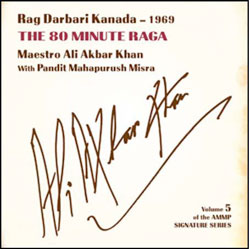
> Ali Akhbar College of Music, LAYA Project <
Ali Akbar Khan (Bengali: আলী আকবর খাঁ) (14 April 1922 – 18 June 2009), often referred to as Khansahib or by the title Ustad (master), was a Hindustani classical musician of the Maihar gharana, known for his virtuosity in playing the sarod. Khan was instrumental in popularizing Indian classical music in the West, both as a performer (often in conjunction with Sitar maestro Ravi Shankar), and as a teacher. He established a music school in Calcutta in 1956, and the Ali Akbar College of Music in 1967, which is now located in San Rafael, California and has a branch in Basel, Switzerland. Khan also composed several classical ragas and filmscores. He was a Distinguished Adjunct Professor of Music at the University of California, Santa Cruz. Read More: > HERE <
„Darbari Kanada“ is a late-evening rag played between 9:00 PM and midnight. Most classical performers treat this rag with reverence, as it is one of India’s most majestic ragas. This session took place in 1969 in a New York City church, with the natural reverberation adding a tremendous and distinct element, along with audible sounds of the city streets. No attempts were made to alter the original content of the master recordings. Ali Akbar Khan’s electrifying performance of this heroic rag adds notable weight to his stature as „a musician’s musician.“ He plays with subtlety and control along with the strength of a master.
Now Available at the Ali Akbar College of Music:
ALI AKBAR KHAN
Vol. 5 of the AMMP Signature Series
TRACK LISTING
CD 1: Alap (Solo)
CD 2: Gat (Tabla Accompaniment)
Original 80-minute concert recording
Disc Two features accompaniment
from Pandit Mahapurush Misra
Packaged with liner notes and
archival photos
Winter Session 2010 Starts Sunday, February, 14th – This session features a full lineup of Introductory Courses, Youth Courses and Online classes via Webcast. Please check our schedule or you may also register now.
Donations to the AACM are much appreciated! To date we have raised $11,000 of our $30,000 goal toward college operations. Thank you to our current members for your continued support!
Kathak Academy , Shehjar, Kashmir Poetry
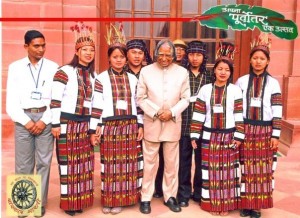
Artists from North East (Mizoram) with > Dr. APJ Abdul Kalam < at Rashtrapati Bhavan
Kathak (Hindi: कथक, Urdu: کتھک) is one of the eight forms of Indian classical dances, originated from northern India. This dance form traces its origins to the nomadic bards of ancient northern India, known as Kathaks, or storytellers. These bards, performing in village squares and temple courtyards, mostly specialized in recounting mythological and moral tales from the scriptures, and embellished their recitals with hand gestures and facial expressions. It was quintessential theatre, using instrumental and vocal music along with stylized gestures, to enliven the stories. Its form today contains traces of temple and ritual dances, and the influence of the bhakti movement. From the 16th century onwards it absorbed certain features of Persian dance and Central Asian dance which were imported by the royal courts of the Mughal era. Read More: > HERE <
Kashmiri Pandit (Hindi: कश्मीरी पण्डित) refers to a person who belongs to a sect of Hindu Pandits who originate from the Kashmir region in the Indian subcontinent. Many experts speculate that the Aryan Race originated in Kashmir and its vicinity. Kashmiri Pandits have made significant contributions to Indian thought and science. Abhinavagupta, Kalhana have been stalwarts in the fields of, philosophy and history respectively. Kashmir figures prominently in Sanskrit poet Kalidasa’s compositions but it is not known conclusively whether he hailed from that ethnicity or region. The birth place of CHARAKA one of the founders of AYURVEDA and INDIAN MEDICINE in general is also considered to be in Kashmir. Read More: > HERE <
The Pandit Shambhu Maharaj Kathak Academy was established to offer an all encompassing training in Kathak and Hindustani music. Apart from Kathak, and Hindustani Vocal, other courses being taught are Tabla, Yoga and Sanskrit. The teaching is of a uniformly high standard and the students are constantly encouraged and supported with scholarships and freeships, workshops and interactive sessions with renowned artists. The students are also provided the hostel facilities in a much secure and appropriate environment.
The school offers training at three levels.
About Vashwati Mishra – DANCE is my language, friend, identity, reflection, strength, medium and my consciousness.
Kathaks Improvisational character draws me. Every moment of the dance has its own innate beauty and enjoyment speed,rhythm,grace, expression It reflects all the colours of life.
Most people dream and then there are the few who give concrete shape to their dreams. In 1984 Vaswati Misra, an exponent of Kathak, choreographer and teacher started to give shape to her dream. With no financial support, but with the good wishes of friends and family she founded Dhwani, a center for the performing arts. She chose the name with care. Commonly taken to mean sound, for her, the meaning was definitely „In which the implied is more striking than the expressed“ The meaning reflected perfectly her approach to both choreography and performance. Read More: > Here <
Dhwani a cultural organization. Registered in 1984. Recognized by Indian Council for Cultural Relation, Department of Culture, Ministry of HRD, CID, Unesco.
About Shehjar – The idea of an e-magazine, with focus on multiple aspects of our rich cultural heritage, politics, philosophy, community news, views, people, community business promotion,networking,matrimonials,entertainment, new songs & videos and other such, originated in the middle of 2007. We are amazed at the pace the events have unfolded, converting those initial turbid perceptions into a reality.
Though we intend to have special, theme based issues as well, we endeavor to put together an interesting mix of articles, poems and event sections in each issue. Every issue attempts to have a fair representation in terms of variety of content and subjects. A web based magazine does not have limitations with regard to the publishing of high quality multimedia content, like graphics, audios and videos etc. as compared to the traditional subscription-based print magazines that inherently lack some of these feature.
Conceived and designed to be an interactive online magazine to serve the large global Internet readership, Shehjar will appear at regular intervals. Its hosting website, kashmirgroup.com, will be ever active and responsive to readers, with features like discussion forum, news and readers’ feedback. We hope that you will find these features interesting and keep us busy with your participation. With a global membership database and subscription listof about 10,000 registered users/members in our group, the possibilities of immediate readership are limitless.
*****
Shri G.L. Kaul retired as an Information officer for the J&K State. He had also been editing Kashmir Today ( English) and Tameer (Urdu) both official magazines of Information Department. As an avid theater activist he has acted in and directed many plays in Kashmiri, Urdu, Hindi and Punjabi, performing all over the country. He is the founder member of J&K cultural academy and IPTA group.
> Girdhari Ji’s Poetry VIDEO <
*Kashmirii Kavita Tehar-ta-charvan, *Urdu/Hindi Kavita Aye Mere Ghar*
One of the many talents of Girdhari Ji is his ability to write poems in several languages; that connect instantly with the reader. And what tops even that is the narration of this poetry in his lyrical voice and style. We are delighted to inform our subscribers that in this issue of Shehjar and in several forthcoming ones, we will be presenting videos of Girdhari Ji narrating several of his poems. These videos were prepared by his son Prof. Sanjay Kaul when Girdhari Ji was in the Boston area.
The two videos in this issue are in Kashmiri and in Hindi-Urdu. The Kashmiri is chaste and words flow easily, making his poetry well suited for musical compositions. We are suggesting that some of the musicians among our readers create memorable songs based on Girdhari Ji’s poetry and request you to contact us if you would like to do so. We will put you in contact with Girdhari Ji.
Our email id for all correspondence is editor.shehjar@gmail.com
YOGA, TREE AND OUR UNIVERSE
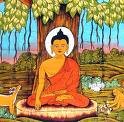
The Originar of Hatha-Yoga
Tree is the highest evolved form in plant kingdom. Man is the highest evolved species in Animal kingdom. Mushrooms are the best fungi visible on this planet. There is commonality of forms among all these highest evolved forms among different type of life-forms -Tree-like structure.Man is a cerebro-spinal being sheathed within a fleshy body. Most evolved form of cell is neuron that mediates consciousness is Tree-like structure. Surprisingly, most powerful thing that mankind achieved viz. atom bomb , produce Tree-like clouds after exploding on the surface.
Tree-like structure in Nature!
One can find out where else do Tree-like structure in nature exist. Pliny, the Younger linked the eruption of Vesuvius eruption in 79 A.D. with Italian umbrella pine. It is now an established scientific fact that the most powerfur process within earth, volcanic plumes that move inside earth is umbrella-shaped with a column & umbrella spinning about vertical axis( Tree-like). The most terrible force on the surface of the earth are the Tornados which are again Tree-like shapes with a column & an umbrella. Tree-like shape is found in other very powerful phenomena like lightening flashes, electric sparks, river delta, snowflakes, coral .
Tree-like structure is characteristics of every visceral system. Biologists trace this form in the mosses, lichens, shrubs, root system, mammalian lung bronchioles, cells of nervous system, veins & arteries forming cardio-vascular system. Wheresoever there are branching system, that invariably culminate in a Tree-like structure.
Tree & Fractal Geometry
In last fortnight, a brilliant paper was published in ‚Advances in Soft Computing“, under the title“Algorithms for Tree-like Structure Generation“ by Anna Romanowska, a neuro-anatomist et al. The team characterised Tree-like structure as that form which bifurcates but do not form any cycles. The team picked up the concepts of fractal geometry & fused with algorithms to create a Recurrent Algorithm. Self-similarity and repetition of sequence( iteration) is generated by a bifurcating cascade. The team concluded that if living system are generated recurrently, complex organic structures like roots, bronchial system in lungs emerge.
Now that an algorithm for Tree-like structure has been generated, it will be feasible in a decade to manufacture on mass scale silicon bronchial/ cardio-vascular/ neural system .
Before the advent of Fractal geometry by Benoit Mandelbrot during 1970s, the question of Tree-like structure had perturbed many a great minds. Hisao Honda of University of Kyoto published a paper on “ Description of the Form of Trees by the parameters of the Tree-like body“ in the Journal of Theoretical Biology, May, 1971. Honda concluded that Tree architecture maximizes flow access. He found stastitical similarity in living & non-living world, among branching in living system & geological & geophysical system.
- Meet Swami SIVANANDA friends, yoga, studies, at facebook <
- Meet Bhagavad Gita friends, yoga, studies at facebook <
- Meet Patanajali friends, yoga, studies at facebook <
- Meet Buddhism, friends, studies, Medicine at facebook <
- Meet Paramahansa Yogananda friends, groups, studies at fb <
- Meet Raja Yoga, Friends, Group, studies at facebook <
- Meet IYENGAR (B.K.S.), Yoga, Friends, Studies, Groups at fb<
- Meet Swami Vivekananda, Yoga, Studies, Friends, Groups at fb<
- Meet Bhagavad Gita, Yoga, Studies, Friends, Groups at fb <
- Meet Ramana Maharshi Groups, Friends, Studies, Fans at fb<
- Meet Hinduism, Groups, Friends at facebook <
- Meet Kashmir Hinduism, Studies, Friends at facebook <
- Meet Shaktism and Devi the Godess at facebook <
- Meet Saundaryalahari: Wave of Bliss by Shankaracharya at fb <
- Meet Arsha Vidya Gurukulam, Studies, Friends, Fans, at fb <
- Meet Advaita Vedanta,Groups,Studies, Vivekananda at fb <
- Meet Yogi Yogendra Nath, Studies about Goraksha at fb <
- Meet Jaya Kula and the three ways of Practicing tantra at fb <
- Meet VASTU, Friends, and Study Groups at facebook <
- Meet Jyotish, Friends, and Study Groups at facebook <
- Meet Sacred Geometry at facebook <
- READ MORE HERE:
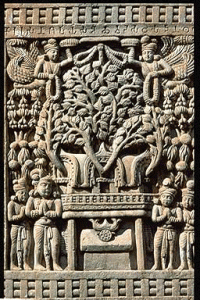
Morphic field & Morphic Resonance!
Tree-form is found in lower kingdom of Animal as well as Fungi. Jelly fishes or the polyp, these are invariably shaped like Trees. The colonies of proliferating marine organism replicate this form. It is interesting that jellyfishes which have no neurons & man with maximum neurons are essentially same in shape. Great Scottish biologist, Sir D’Arcy Thompson wrote in 1917 „On Growth and Form“, to analyse patterns & shapes in nature. His erudite tradition sd being carried by Rupert Sheldrake, a British biologist. He has done extensive work on the concept of morphic field & morphic resonance. By morphic resonance, he explains the influence of Like upon Like by which a connection among similar fields is established. He has shown in his work example of crystallization. It is very difficult to crystallize a new compound for the first time. Once it is done, a morphic field emerge. It is easier next time if someone does elsewhere in the world. There is a cumulative influence & it gets easier & easier to crystallize the compound. There is an accelerated rate of crystallization . Similarly, in learning among rats, this phenomena has been experimentally confirmed. It is difficult for a rat to pass through a maze for the first time. But, once a rat does this, another rat elsewhere does it much easily. And with each learning , there is spontaneous spread of new habits. For Sheldrake, evolutionary spread of new habit is not genetic but depends on a kind of collective memory due to morphic resonance.
This can be easily comprehended in case of human. It was very tough to manufacture clock or VCD or computer. More people are manufacturing, easier it is getting to manufacture. Watches, transistora & VCDs are now cottage industry. Who knows in future, robotics will emerge as similar kind of easily handled industry and there will be garages in every nook & corner of city to repair robots or even remodell robots by neighbourhood mechanic.
Sheldrake further proposes the concept of the „Memory of Nature“. Habits of nature depend on non-local similarity reinforcement. Through morphic resonance, the pattern of activity in self-organizing system are influenced by similar patterns in the past. He brings back the idea of Carl Jung‘ collective unconscious.
Examining Growth of Tree-Form!
I find the concept of morphic resonance appealing. That can explain this frequent recurrnce of similar pattern in nature. If we ponder over the shape of DNA & its future. The fluid around earth’s inner core creates a helical movement and generates magnetic field. The geodynamo of the earth is a self-replicating system that help explain the continuity of magnetism in earth’s core , otherwise it would have dissipated within 20,000 years. Now, the transformatory biological molecule,DNA, is helical as well as self-replicating. Within geo-physical processes, we know that Tree-like plumes are created. Now, this geophysical structure resonates throughout future evolution of biological world. For every plume within, there is a tornado on the surface. This first form of powerful process recurs at the level of the most developed categories at various levels, may it be fungi, or plants or animals or cells. And, that form recurs in even man-made powerful processes like atomic explosions.Upon visualizing this sequence, I can very well predict that the most successful biological robots or most efficient spaceship for planetary travels would have Tree-like architecture. Our Discovery spaceship is a poor materialization of that critical architecture.
Tree & bifurcation!
This Tree-like structure itself is generated by recurrent self-similarity which results due to behaviour of a dynamic system. Now, the chaos theorists have worked out very well that how in a dynamic system , a stage of crisis is set in and at the point , there are two possibilities for the system to transform. Sometimes, the system oscillates between two possibilities as found in certain chemical clocks extensively investigated by Nobal laureate Ilya Prigogine.Most of the times, the branches grow further and then bifurcate. This is iteration of self-similarity that later results into Tree-like structures.
If this kind of bifurcaing iteration is fundamental to our changing Reality which is dynamic, and there is morphic resonance, one can draw the contours of this phenomena of emergence of Tree-like structure at a higher level.
End of biological evolution!
The bifurcation, that determines DNA-replication to cell-division, has finally achieved its destiny in the biological world in the form of Human beings. We are the highest biological form and the biological evolution has now concluded. There is no further scope of biological evolution beyond us.Perfect biological bifurcating branching system has been achieved. Our lungs, our cardio-vascular system, neural system .. everything has emerged as mere consequence of cascading bifurcation. Surprisingly, we have greater number of most evolved cells viz. neurons (200 billions) which themselves replicate own form at macrolevel. The cerebro-spinal system is a magnified neuron. We are the only animal to walk on 2 legs. Penguins do perform but lack other binarities. We have two legs, two hands, two nostrils, two ears, two testicles, two mammary glands, two eyes, two kidneys, two hemispheres in brain, two atrium, two ventricles in heart, two excretory points, two lips, two jaws. Our thinking pattern is also binary. Our categories are in twos- good/bad, high/low,sacred/profasne, self/other… We donot yet understand that this duality in thought is rooted in hemispheric brain or in fractal geometry. There is no more bifurcation & branching possible in bodily architecture of human beings. This is the end-point of biological evolution. Now, mankind is on verge of developing biological robots & higher order machine consciousness therby imbuing consciousness to physical world bypassing the biological evolution. We are becoming the co-creator of the Universe as well as agent to accelerate self-consciousness of physical matter in the universe.
Trees are our cousin!
Now, the issue of Tree-like structure resonates into our collective psyche. Tree is the source of wisdom, healing, nourishment, power. Bible myth has Tree . Newton discovered moodern science sitting under an apple Tree. Buddha discovered non-theistic self-awareness sitting under a peepul Tree. In Tibetan tradition, powerful meditation requires visualizing Tree of lineage with various Gurus on different branches. These kind of visualization has transformative effect on our consciousness. In every culture, Tree occupies a significant position in rituals & mythology. We feel special feeling with Tree. Our romantic mood, our wisdom, contemplative mood, aesthetic mood.. orbit around physical & metaphoric Tree. Tree have power to transmit some kind of healing power to us. Tree are the source of healing body through fruits & herbal medicine . Tree heals our body, mind as well as soul, if any. The processes involved may be a kind of morphic reonance that vitalizes self-similar cardio-vascular, respiratory & neural system.Trees are our morphic cousins. We feel guilty & hurt when trees are cut or when those are under environmental threat.
Future?
One thing is certain. Future robots & spaceships which would be most efficient to survive would have Tree-like architecture. We would have very little to do with blooming of age of nanotechnology, biotechnology & Artificial intelligence. Successful creation of algorithm for Tree-like structure has made it more likely that artificial human organs can be manufactured at industrial level. When death will be conquered after successful download of Memories & large scale diffusion of bionics, We would have enough time to resonate with biological Trees in solitude & steer mankind towards a spiritual evolution as biological evolution from DNA-pathway has reached a dead end!
(Niraj,1.11.2009)
CARL ORFF – Carmina Burana, Music Therapy
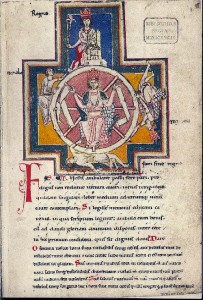
> CARMINA BURANA, Text with Translation <
Carmina Burana (pronounced /ˈkɑrmɨnə bʊˈrɑːnə/), Latin for „Songs from Beuern“ (short for: Benediktbeuern), is the name given to a manuscript of 254 poems and dramatic texts from the 11th or 12th century, although some are from the 13th century. The pieces were written almost entirely in Medieval Latin; a few in Middle High German, and some with traces of Old French or Provençal. Many are macaronic, a mixture of Latin and German or French vernacular.
They were written by students and clergy when the Latin idiom was the lingua franca across Italy and western Europe for travelling scholars, universities and theologians. Most of the poems and songs appear to be the work of Goliards, clergy (mostly students) who set up and satirized the Church. The collection preserves the works of a number of poets, including Peter of Blois, Walter of Châtillon and the anonymous one, referred to as the Archpoet.
The collection was found in 1803 in the Benedictine monastery of Benediktbeuern, Bavaria, and is now housed in the Bayerische Staatsbibliothek in Munich. Along with the Carmina Cantabrigiensia, the Carmina Burana is the most important collection of Goliard and vagabond songs. Read More: > HERE <
Carl Orff – Carmina Burana
The Orff method, also known as Orff-Schulwerk or Music for Children, is an approach to music education conceived by the German composer Carl Orff (1895-1982). It was developed in the 1920s and 1930s while Orff was music director of the Günther-Schule, a school of dance and music in Munich. The guiding principles were contained in his publication Orff-Schulwerk (Mainz 1930-5), to which revisions came later. The first of many foreign versions was Music for Children (Mainz 1956-61), an adaptation in English by Doreen Hall and Arnold Walter of the University of Toronto.
Orff’s approach, developed for children but latterly used also with adults, was based on his belief that the easiest method of teaching music is to draw out the student’s inherent affinities for rhythm and melody and allow these to develop in natural ways, leading the child by his or her intuition from primitive to more sophisticated expression through stages parallel to western music’s evolution. Orff accomplishes this by means of a carefully planned program, beginning with speech patterns, rhythmic movement, and two-note tunes, then moving logically into pentatonic melody. Adult pressure and mechanical drill are discouraged. Improvisation is encouraged.
Major and minor melody are introduced as the final stage of the program. Orff designed a special group of instruments, including glockenspiels, xylophones, metallophones, drums, and other percussion instruments to fulfill the requirements of the Schulwerk courses.
VEDIC MUSIC and Relation to Music Therapy:
Indian traditional systems of health and healing also include various musical treatment approaches. A few healing traditions are also integrated in modern music therapy practice in India. Vedic traditions dating back roughly 5000 years ago had a great intuition about the power of sound and intonation.
The Vedic chants and music which had more sound and rhythm, used as a source of healing and up liftment reflected the intuition that each intonation and inflection of voice could have beneficial or adverse effects. Music Raga Therapy a, an extinct sanskrit treatise, as its name implies dealt with curative ragas and suggested specific ragas with specific therapeutic and a prophylactic medium in clinical and educational settings.
The Vedic system of health care concerned with healthy living and not disease specific takes into account the patient’s entire personality, body, mind and the spirit and guides the participants for a healthy living along with the therapeutic measures that relate to physical, mental, social and spiritual harmony.
Nada Yoga is the core of Dhrupad, the most ancient style of Hindustani Classical Music. Originally only sung by priests in the temples as an act of worship, it induces a deep meditative state in the singer as well as the listener.
- Nada Yoga & Philosphy: > HERE <
Which are the features of Carl Orff’s and Gunild Keetman’s ideas relevant for the work in community and therapy? A child who is mentally or physically handicapped, emotionally or sensorially disabled or autistic, is never just only that. The characteristics of a person that are not expressed in these terms, however, are precisely the ones that make musical communication and thus a connection with the so-called „normal“ people possible. A historical review shows the sources from which the adaptation of the Schulwerk for the work with handicapped and disturbed children and young people was made possible and meaningful.
A brief section intends to define the fields of „Music Education“ – „Music in special needs and community“ – „Music Therapy“ in order to distinguish them and finally point out the contents they have in common. Read More: > HERE <
The author uses quotes by Carl Orff in order to document the basis for therapeutic work in his ideas and describes how pedagogues and therapists, from the early sixties until today, have developed them for and together with different groups with special needs:
- The multi-sensorial approach through speech, free and bound rhythm, movement, singing and playing instruments provides possibilities for spontaneous creative play in a social context, even if one important sensorial area is severely damaged.
- Every member of an integrative music and movement group is participating actively in a creative process.
- The instrumentarium allows participants to play together in a spontaneous way.
- Relationship through musical expression and play as an encounter between two people which is the basis for emotional development.
- Musical reception and expression is independent of intellectual capacity, age and previous musical experience.
- Meet CARL ORFF, friends, fans, groups at facebook <
THE EAST MEETS WEST MUSIC INC.

http://eastmeetswestmusic.com/
> Ali Akhbar College of Music, LAYA Project <
> GHARANA – Benares Music Academy <
„There is something beautiful about the stage. There is a performer and there is an audience. Nothing is in the way. The sound remains pure and unburdened by things like marketing and distribution. My hope is for this label to be more like a stage and less like the music business as I have experienced it.”
–Ravi Shankar
Ravi Shankar (Bengali: রবি শংকর; born 7 April 1920), often referred to by the title Pandit, is an Indian sitarist and composer. He has been described as the most well known contemporary Indian musician by Musik in Geschichte und Gegenwart.Shankar was born in Varanasi and spent his youth touring Europe and India with the dance group of his brother Uday Shankar. He gave up dancing in 1938 to study sitar playing under court musician Allauddin Khan. After finishing his studies in 1944, Shankar worked as a composer, creating the music for the Apu Trilogy by Satyajit Ray, and was music director of All India Radio, New Delhi, from 1949 to 1956. Read more: > HERE <
WELCOME – The Ravi Shankar Foundation proudly announces the launch of East Meets West Music. EMW Music is a listener’s passport to the sitar master’s personal archive of thousands of hours of live performance audio, film footage, interviews, and studio masters. By making personally selected source material from this collection available, Ravi Shankar hopes to bridge any divide between his recorded music and his audience. EMWMusic also provides a vibrant space for new artists, projects, and collaborations. We are thrilled to begin this journey with our long time supporters and new fans alike.
The aim of the Benares Academy is to:
- Establish a school for the teaching of Indian Classical music in the traditional Benaras Gharana style;
- Provide scholarships to children to assist them in their learning of this musical style;
- Create opportunities for students and young artists to develop their potential through study and performance;
- Provide right livelihood for qualified and dedicated teachers.
For this purpose, the Mishra family purchased land in Benares on which to build a residential music school. The construction of the building took around three years to be completed and now the Academy is a well-structured place to receive students from all over the world.
For foreign students, who are committed to studying seriously, the Academy opens its doors providing them with all facilities needed such as a proper music hall, nice rooms with or without toilet attached, spacious kitchen, mineral water filter and dining room, apart from a safe and peaceful atmosphere. Moreover, it is located five minutes walk from the Ganga River.
The mission of the Ali Akbar College of Music is to teach, perform and preserve the classical music of North India, specifically the Seni Baba Allauddin Gharana (tradition), and to offer this great musical legacy to all who wish to learn. The Ali Akbar College of Music offers education in the classical music of North India at the highest professional level. Our primary instructors are the internationally recognized sarode Maestro Ali Akbar Khan and the master of percussion Pandit Swapan Chaudhuri, from whom our students learn the necessary musical skills, knowledge and understanding to contribute significantly to musical life.
At a dargah (Islamic shrine) situated in the south-east part of India, the singers sing devotional songs in the Qawwali style, with percussion accompaniment. The lyrics are a mix of the local south Indian language, Tamil and Arabic, while the music style is that of northwestern India.
These artists are featured in the award-winning music documentary LAYA PROJECT (www.layaproject.com), and have also released a full album called NAGORE SESSIONS, available at www.earthsync.com
A tribute to the resilience of the human spirit, LAYA PROJECT is a documentary about the lives and music culture of coastal and surrounding communities inthe 2004 tsunami-affected regions. Some of these performances are rare, and documented for the first time.
Sree Debasish Dass (Pintoo) Born in a very tradtional musical familly on May day, Sree Debasish Dass has carved a special niche for himself in the world of Tabla, the king of Indian percussion instruments. He was initiated into Tabla at the tender age of five by his beloved father Late Dilip Kumar Pandit a highly acclaimed Tabla player of Farukkabad Gharana.
True to his date of birth, which symbolises sincere labour, > Debasish < (popularly known as Pintoo) put in years of relentless effort and unfailing dedication to master the art of playing Tabla. He completed his graduation from the world famous Visva-Bharati University founded by the great > Rabindra Nath Tagore < . Thereafter he plunged fully into the subtle complexities Tabla and completed his Diploma in music, Bachelor and Master degree in Tabla.
http://swara.at/ (Plattform f. Indische Musik und Tanz in Österreich)
http://www.alankara.com/ (Ver. z. Förd. d. Ind. Musik ,Kunst in Wien)
http://www.indigenouspeople.net/taino.htm (Ind. Friends, Haiti)
INTERVIEW – DHRUPAD IN MUSICTHERAPY
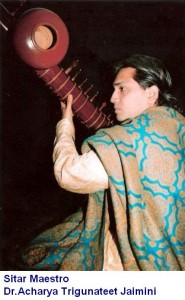
> DAYALBAH EDUCATIONAL INSTITUTE <
> I N T E R V I E W DHRUPAD IN MUSICTHERAPY <
> NADA YOGA IN THE CORE OF DHRUPAD <
Indian traditional systems of health and healing also include various musical treatment approaches. A few healing traditions are also integrated in modern music therapy practice in India. Vedic traditions dating back roughly 5000 years ago had a great intuition about the power of sound and intonation.
The Vedic chants and music which had more sound and rhythm, used as a source of healing and up liftment reflected the intuition that each intonation and inflection of voice could have beneficial or adverse effects. Music Raga Therapy a, an extinct sanskrit treatise, as its name implies dealt with curative ragas and suggested specific ragas with specific therapeutic and a prophylactic medium in clinical and educational settings.
The Vedic system of health care concerned with healthy living and not disease specific takes into account the patient’s entire personality, body, mind and the spirit and guides the participants for a healthy living along with the therapeutic measures that relate to physical, mental, social and spiritual harmony.
Nada Yoga is the core of Dhrupad, the most ancient style of Hindustani Classical Music. Originally only sung by priests in the temples as an act of worship, it induces a deep meditative state in the singer as well as the listener.
Dr. Acharya Jaimini is taking much interest in preserving the Dhrupad Heritage, He has made Dhrupad performance possible on sitar with its effective presentation in music concerts.
Dr. Acharya Trigunateet Jaimini, apart from being visiting professor in Universities and various music institutions,has given memorable performances in various music concerts. Having got occasions to play duets with well known Indian and foreign artists, the Sitar recordings of Acharya Jaimini are preserved in the archives of the preservation libraries.
Q: How possible playing Dhrupad on Sitar ?
Dr Acharya Jaimini says that, Dhrupad playing on sitar, is not easy because bringing sitar to the depth of Dhrupad – „Beenkari & Alapchari“ techniques during sitar recital is an extra ordinary thing. This in itself is an effective tranquilizer. Sitar playing being under the „Da-Dir-Daara“ strokes, clarity of technical dimensions, deeply presentation of Dhrupad and binding of the flow of „Nom-tom“ on mizrab (striker) with „Laykari“ (appropriate divisions of speed ) is a practical demonstration of the Dhrupad technique.
Acharya Trigunateet Jaimini born, nourished and still living in the vicinity of Nidhiban, the place of swamy Haridas at Vrindavan (India ) has been upholding and propagating the same rich tradition on Sitar.
Interview by – Ratnambara (writer Art & Culture)
Nada Yoga is the core of Dhrupad Music
By –
Dr.Acharya Trigunateet Jaimini
Head of Department Music Sitar
Mangalayatan University ,
Aligarh, Uttar Pradesh.
Mail: acharyajaimini@rediffmail.com
Mobile Number: +91 9897153545
Other: 0565 2444178
INDIA
NADA YOGA is the core of Dhrupad Music

> MAJOR SCHOOL´s OF DRHRUPAD <
http://dagarvani.org ( info & free videos)
Dhrupad is the oldest surviving form of Indian Classical music and traces its origin to the chanting of VEDIC HYMNS and MANTRAS. Though a highly developed classical art with a complex and elaborate grammar and aesthetics, it is also primarily a form of worship, in which offerings are made to the divine through sound or n�da. Dhrupad can be seen at different levels as a MEDITATION, a mantric RECITATION, a worship , a YOGA or TANTRA based on the knowledge of the NADIS and CHAKRAS and also purely as a performing art portraying a universe of human emotions. It is mainly a vocal tradition based on the practice of NADA YOGA, but is also performed on instruments like the Rudra Veena and the Sursring�r. For the past five centuries Dhrupad has mainly thrived under the patronage of Mughal and Rajput kings. Read More: > HERE <
Nada Yoga is the core of Dhrupad Music
By Dr.Acharya Trigunateet Jaimini
Indian traditional systems of health and healing also include various musical treatment approaches. A few healing traditions are also integrated in modern music therapy practice in India.
Vedic traditions dating back roughly 5000 years ago had a great intuition about the power of sound and intonation. The Vedic chants and music which had more sound and rhythm, used as a source of healing and up liftment reflected the intuition that each intonation and inflection of voice could have beneficial or adverse effects.
Music Raga Therapy , an extinct sanskrit treatise, as its name implies dealt with curative ragas and suggested specific ragas with specific therapeutic and a prophylactic medium in clinical and educational settings. the Vedic system of health care concerned with healthy living and not disease specific takes into account the patient’s entire personality, body, mind and the spirit and guides the participants for a healthy living along with the therapeutic measures that relate to physical, mental, social and spiritual harmony.
Nada Yoga is the core of Dhrupad, the most ancient style of Hindustani Classical Music. Originally only sung by priests in the temples as an act of worship, it induces a deep meditative state in the singer as well as the listener.
Vrindaban, the abode of Lord Krishna, situated on the bank of the Holy river yamuna is known for its devotional classical music „Dhrupad“. Bhagwat Puran states that Lalita Sakhi sang in Dhrupad style during the famous „Raas“-dance. Since then this tradition of ancient form of worship of Lord Krishna has been maintained in the temples of Vrindaban. Dhrupad is a particular north Indian style of classical music related to „Vraja“. This was enriched and elevated to godly heights by the celebrated swamy Haridas of Vrindaban, the Guru of world famous musician Tansen.
Dhrupad is the most ancient form of Hindustani classical music. There are two interpretations for the word Dhrupad. One is that it is derived from dhruva, the steadfast evening star, and pada, meaning ‘poem’. The other is that the word druva means ‘fixed’ and pada ‘poem’ which makes it into a poem set to music. Its origins have been traced back to the recitation of the sama veda, one of the four sacred vedic scriptures. The form developed through the sama gaan, the chanted transmission of holy texts.
Dhrupad is the oldest existing form of Indian classical music. The nature of Dhrupad is spiritual- its purpose is aradhana (worship). Seeking not to entertain, but to induce deep feelings of peace and contemplation in the listener.
Its origin is linked to the recitation of Sama veda, the sacred Sanskrit text. Dhrupad probably evolved from the earlier chanting of Om, the sacred syllable which is claimed to be the source of all creation. Later, the rhythmic chanting of the Vedic scriptures evolved into singing of Chhanda and Prabandha.
According to some accounts, Dhrupad was sung in temples, the singer facing the divinity. From this early chanting, Dhrupad evolved into a sophisticated, classical form of music. The language of Dhrupad changed from Sanskrit to Brijbhasha sometime between the 12th and the 16th century.
* Nada Yoga Discourse by Dr. Padma Murthy *
Dhrubad, Dhruvatara – the evening star, the star that never trembles, and Pada – poetry, merge to give name to this music, Dhrupad. Dhrupad, the name does what it should, it makes luminous the nature of that which is named.
Sometime during the first millenium A.D. the chanting evolved into the singing of chhanda and prabandha. The modern Dhrupad is said to have emerged out of the prabandha style of the 12th to 14th centuries. By the 11th century it had developed its perfect form. Dhrupad was and still is an act of worship during which the priest or musician surrenders to the Divine and invokes the rasa (mood) of the raga (musical mode). The intention is to put the listener into a state of inner peace and contemplation.
Between the 12th and 16th centuries the language of the compositions changed from Sanskrit to Brijbhasha (the language spoken in the area of Vrindavan) and about six centuries ago the music came under the patronage of the royal Moghul courts, where it was adapted for performance, thus evolving into a refined and sophisticated art form. The compositions became more secular though and were often praises of the emperors, whereas before they had been devotional and philosophical in nature.
One of the patrons of Dhrupad was the Moghul ruler Man Singh Tomar of Gwalior who also practiced the art. It reached its peak during the time of the legendary court musician of Akbar, Tansen, and Swami Haridas, who is often thought to have been the teacher of Tansen.
Nada Yoga is the core of Dhrupad Music
By –
Dr.Acharya Trigunateet Jaimini
Head of Department Music Sitar
Mangalayatan University ,
Aligarh, Uttar Pradesh.
INDIA
Painting by
Renowned Fine Artist
Prof. Chitralekha Singh
D.Litt,
DEAN
Institute of Visual & Performing Arts
Mangalayatan University ,
Aligarh, Uttar Pradesh.
INDIA
References & External Links: > DHRUPAD <
- http://dhrupadsangeetashram.com
- http://www.dhrupad.info/
- Ravi Shankar, Raga Mala, Welcome Rain Pub., 1999, p.319
- http://www.dhrupadsangeetashram.com
- http://www.dagar.org
- http://www.dagarvani.org
- http://www.dhrupadsangeetashram.com
- http://www.hindu.com/thehindu/fr/2006/02/24/stories/2006022403320600.htm
- http://www.dagarvani.org/dagar-family-tree.html
-
www.ritwiksanyal.com –Dhrupad Ritwik Sanyal
-
www.dhrupad.org –The dhrupad school of the Gundecha Brothers
-
www.dhrupad.info –Dagarvani singer Ashish Sankrityayan’s web site
-
www.dagarvani.org –The off. web site of Ustad F. Wasifuddin Dagar
- http://udaybhawalkar.org/ – Dhrupad Uday Bhawalkar
- www.dhrupad.org – The dhrupad school of the Gundecha Brothers
- www.dhrupad.info –Dagarvanisinger Ashish Sankrityayan’s web site
- www.dagarvani.org – The off. web site of Ustad F. Wasifuddin Dagar
- GHARANA, BENARES MUSIC ACADEMY, Children Project <
- ALI AKHBAR COLLEGE OF MUSIC <
- Meet Dhrupam studies, groups, friends at fb <
- Meet free VISA to India for MBA, degree programs, jobs at fb <
- Meet Maestro Jaimini at facebook <
- MeetSWARA.at,Plattform f. ind. Musik/Tanz in Österr. at fb <
TRADITIONELLE MEDIZIN IN EUROPA
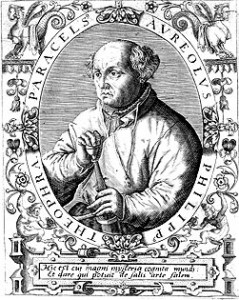
> TRADITIONAL GREEK MEDICINE <
Paracelsus (born Phillip von Hohenheim, 11 November or 17 December 1493 in Einsiedeln, Switzerland – 24 September 1541 in Salzburg, Austria) was a Renaissance physician, botanist, alchemist, astrologer, and general occultist. Born Phillip von Hohenheim, he later took up the name Theophrastus Philippus Aureolus Bombastus von Hohenheim, and still later took the title Paracelsus, meaning „equal to or greater than Celsus“, a Roman encyclopedist, Aulus Cornelius Celsus from the first century known for his tract on medicine.He is also credited for giving zinc its name, calling it zincum and is regarded as the first systematic botanist
GERMAN PHYSICIAN, ALCHEMIST, AND SCIENTIST
1493–1541
Paracelsus was born Theophrastus Bombastus von Hohenheim.
He was a contemporary of Martin Luther and > Nicolaus Copernicus <. He adopted his pseudonym based on his assertion that he was a better physician than Celsus, the first century C.E. Roman author on medicine acclaimed in Renaissance Europe (he was „Para-Celsus,“ or beyond Celsus).
His self-promotion as „The Most Highly Experienced and Illustrious Physician … “ has given us the word „bombastic,“ derived from his birth name.
Paracelsus gained his early medical knowledge from his father, who was a physician. He followed this education with formal medical training at the University of Ferrara in Italy. Finding his formal training disappointing, Paracelsus embarked on a life of travel and study combined with medical practice. According to Paracelsus, he collected medical knowledge anywhere he could find it without regard to academic authority.
He acknowledged his consultations with peasants, barbers, chemists, old women, quacks, and magicians. Paracelsus developed his notions of disease and treatment away from any established medical faculty and promoted the idea that academic medical training had reached a state deeply in need of reform.
Paracelsus believed in the four „Aristotelian“ elements of earth, air, fire, and water. His medical theory was based on the notion that earth is the fundamental element of existence for humans and other living things. Paracelsus believed that earth generated all living things under the rule of three „principles“: salt, sulfur, and mercury. He therefore believed these substances to be very potent as chemical reactants, as poisons, and as medical treatments. Read More about Aristoteles: >HERE <
THE AGAMIC TRADITION AND THE ARTS – (tantrah.)
Mahabhutas in Sangita-Sastra
With Special Reference to Yoga and Ayurveda
Prem Lata Sharma
The five elements have been said here to be the manifestation of Siva, the Supreme Being.
An enquiry into the role of Mahabhutas in Music is essentially a quest for the relationship between the ‚outer‘, ‚inner‘, and what is beyond the two. Roughly, the human organism is the ‚inner‘, whatever is outside the body is the ‚outer‘ and both are closely interrelated.
That which permeates both of them and is yet intangible is beyond them. In understanding the ‚inner‘, both Yoga, and, Ayurveda have made a deep study of the psycho-physical centres in the human body as well as the physiological structure of the body in terms of the Mahabhutas.
The unity of the ‚inner‘ and the ‚outer‘ has been established by expounding that the sense-organs, their objects and their functions are all manifestations of the Mah¡bh£tas. The following passage from Sa´g¢ta-Ratn¡kara makes this very clear.
The Sangita-Ratnakara (1.2.56c-71b) describes the structure and functions of the human body in terms of the five Mahabhutas as follows: >>> H E R E <<<
RAJA DEEKSHITHAR: ( http://rajadeekshithar.com/ )
…“ Education: Proposed PhD on the Panca Mahabhuta or Primordial Elements in Indian Traditions under Professor Dr.Ria Kloppenborg of the Department for Religious Studies, Faculty of Theology of the University of Utrecht in The Netherlands. This PhD could not be completed because of the untimely passing away of Professor Kloppenborg (2002-2004)…“
“ The mahabhutas in cidambaram and ancient temples „
GROSS ELEMENTS IN YOGA, AYURVEDA, HINDUISM, BUDDHISM:
MahÄ�bhūta is Sanskrit and PÄ�li for „great element.“ In Hinduism, the five „great“ or „gross“ elements are ether, air, fire, water and earth. In Buddhism, the „four great elements“ (Pali: cattÄ�ro mahÄ�bhūtÄ�ni) are earth, water, fire and air.
In Hinduism’s sacred literature, the „great“ or „gross“ elements (mahÄ�bhūta) are fivefold: space (or „ether“), air, fire, water and earth.
For instance, the TaittirÄ�ya Upaniṣad describes the five „sheaths“ of a person (Sanskrit: puruṣa), starting with the grossest level of the five evolving great elements:
From this very self (Ä�tman) did space come into being; from space, air; from air, fire; from fire, the waters, from the waters, the earth; from the earth, plants; from plants, food; and from food, man…. Different from and lying within this man formed from the essence of food is the self (Ä�tman) consisting of lifebreath…. Different from and lying within this self consisting of breath is the self (Ä�tman) consisting of mind…. Different from and lying within this self consisting of mind is the self (Ä�tman) consisting of perception…. Different from and lying within this self consisting of perception is the self (Ä�tman) consisting of bliss….
In Buddhism, the four Great Elements (Pali: cattÄ�ro mahÄ�bhūtÄ�ni) are earth, water, fire and air. MahÄ�bhūta is generally synonymous with catudhÄ�tu, which is PÄ�li for the „Four Elements.“ In early Buddhism, the Four Elements are a basis for understanding and for liberating oneself from suffering. They are categories used to relate to the sensible physical world, and are conceived of not as substances, but as sensorial qualities.
In the Pali canon, the most basic elements are usually identified as four in number but, on occasion, a fifth and, to an even lesser extent, a sixth element may be also be identified.
Read Full Text: > HERE <
> Verzeichnis Naturheilkunde, Verbände, Organisationen <
> Meet All Herbal Studies, Groups, Friends, Fans at Facebook <
> Meet Paracelsus at facebook <
> Meet Aristoteles at facebook <
VISVA-BHARATI UNIVERSITY, TRUST
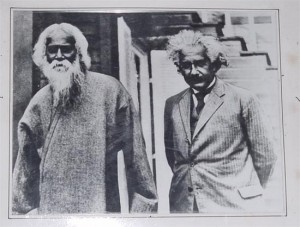
RABINDRANATH TAGORE – YOGAH,SCIENCE POETRY
INT. CONFERENCE ON GLOBAL CLIMATE CHANGE
Visva Bharati University, Santiniketan (বিশ্বভারতী বিশ্ববিদ্যালয়) is a Central University for research and teaching in India, located in the twin town of Santiniketan and Sriniketan Indian state of West Bengal. It was founded by Rabindranath Tagore who called it Visva Bharati, which means the communion of the world with India. In its initial years Tagore expressed his dissatisfaction with the word ‚university‘, since university translates to Vishva-Vidyalaya, which is smaller in scope than Visva Bharati. Until independence it was a college. Soon after independence, in 1951 the institution was given the status of a university, and was renamed Visva Bharati University.
The origins of the university date back to 1863 when Maharshi Debendranath Tagore, himself the zamindar of Silaidaha in East Bengal, bought a tract of land from the zamindar of Raipur, which was a neighbouring village not too far from present day Santiniketan and set up an ashram at the spot that has now come to be called chatim tala at the heart of the town. The ashram was initially called Brahmacharya Ashram, which was later renamed Brahmacharya Vidyalaya. It was established with a view to encourage people from all walks of life to come to the spot and meditate. In 1901 his youngest son Rabindranath Tagore established a co-educational school inside the premises of the ashram. Read More > here <
VISHWABHARATI TRUST:
Project Description
The > Vishwabharati Trust < is located at Anavatti, a rural area belonging to Karnataka,India. The place is about 500 kms from Bangalore, well connected by road, amidst beautiful Malnad greenary.
The Vishwabharati Trust was started on 6 th October, 1997 to provide education to poor and physically handicapped children. The trust is presently running a school and 140 deserving children are now studying.
The main objectives of the Vishwabharati Trust are as follows:
1. To make the children self dependent.
2. To make the children aware of our rich culture and heritage.
3. To develop fine and strong character.
4. To develop the children in sports and extra curricular activities
Organization Description
Objectives:
To establish and maintain educational institutions from pre-primary to post graduation level, including professional, technical, vocational and training institutes of any kind and moral training for the benefit of the public in rural community particularly.
> Meet Rabindranath Tagore Fans at facebook <
> Meet handwritten Letter In Sweet Memory of Tagore at facebook <
> Meet STOP GLOBAL WARMING GROUPS AND STUDIES at facebook <
> Meet Vishva-Bharati Public School at facebook <
